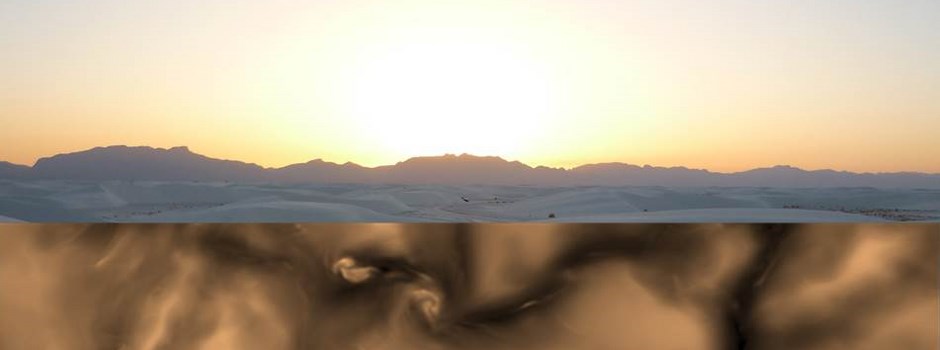Team Purpose
The effect of solar spectral
irradiance variations on different time scales on
the Earth’s atmosphere and climate is still poorly
known. Apart from the severe difficulty of
modeling the physical and chemical processes that
regulate the Sun-Earth atmosphere interaction,
these investigations are hampered by uncertainties
in the measurement of solar irradiance variations.
To overcome the limitations of the available
measurements and to understand the processes that
generate irradiance variations, various
proxy-based techniques have been developed to
reproduce irradiance from observations of surface
magnetism as derived from solar full-disk
observations. However, discrepancies between
estimates obtained from different reconstruction
techniques are still too large to assess the
effects of irradiance variations on the
terrestrial atmosphere with confidence.
Observations of the solar atmosphere reveal the presence of different types of features whose radiative output can be properly understood and modelled only by taking into account the multidimensional nature of convective and radiative processes. On the other hand, many irradiance reconstruction techniques employ one-dimensional static atmosphere models to synthesize the radiative output of quiet and magnetic regions. A natural step forward in modeling solar irradiance would therefore be the use of three-dimensional magnetohydrodynamic (3D MHD) simulations of the solar atmosphere, which indeed have been shown to be successful in reproducing many of the observed properties of the solar atmosphere with unprecedented degree of realism, particularly compared to traditional one-dimensional models. While there presently is a general consensus among the solar physics community that the employment of such 3D simulations should be further exploited, the literature concerning the application of MHD simulations to irradiance reconstruction studies is still quite scarce. At the moment, one major difficulty is that the researchers specializing in irradiance reconstructions and those specializing in 3D MHD modeling with multi-dimensional radiative transfer are part of two very distinct communities. The formation of an ISSI international team on the proposed topic would therefore be a unique opportunity to bring the two communities together and make them aware of the difficulties inherent in irradiance measurements and reconstruction on one hand, and in multi-dimensional modeling of the solar atmosphere on the other, and foster development of irradiance models based on 3D MHD simulations.
The team is composed of 12 members from 9 different countries, and two external experts. The expertise of the members is equally balanced between solar irradiance variability and numerical simulations, with some overlap. By focusing on specific issues, the team will answer the question whether, and how, 3D MHD simulations of the solar atmosphere can be employed to improve our understanding of solar spectral irradiance variations, and reproduce them more faithfully for the purpose of improving our knowledge of the Sun-Earth atmosphere interaction.
Observations of the solar atmosphere reveal the presence of different types of features whose radiative output can be properly understood and modelled only by taking into account the multidimensional nature of convective and radiative processes. On the other hand, many irradiance reconstruction techniques employ one-dimensional static atmosphere models to synthesize the radiative output of quiet and magnetic regions. A natural step forward in modeling solar irradiance would therefore be the use of three-dimensional magnetohydrodynamic (3D MHD) simulations of the solar atmosphere, which indeed have been shown to be successful in reproducing many of the observed properties of the solar atmosphere with unprecedented degree of realism, particularly compared to traditional one-dimensional models. While there presently is a general consensus among the solar physics community that the employment of such 3D simulations should be further exploited, the literature concerning the application of MHD simulations to irradiance reconstruction studies is still quite scarce. At the moment, one major difficulty is that the researchers specializing in irradiance reconstructions and those specializing in 3D MHD modeling with multi-dimensional radiative transfer are part of two very distinct communities. The formation of an ISSI international team on the proposed topic would therefore be a unique opportunity to bring the two communities together and make them aware of the difficulties inherent in irradiance measurements and reconstruction on one hand, and in multi-dimensional modeling of the solar atmosphere on the other, and foster development of irradiance models based on 3D MHD simulations.
The team is composed of 12 members from 9 different countries, and two external experts. The expertise of the members is equally balanced between solar irradiance variability and numerical simulations, with some overlap. By focusing on specific issues, the team will answer the question whether, and how, 3D MHD simulations of the solar atmosphere can be employed to improve our understanding of solar spectral irradiance variations, and reproduce them more faithfully for the purpose of improving our knowledge of the Sun-Earth atmosphere interaction.
Image credits:
Top-White Sands National Monument, New Mexico
Bottom:-Detail of an MHD simulation of the solar photosphere. Courtesy of Matthias Rempel
Top-White Sands National Monument, New Mexico
Bottom:-Detail of an MHD simulation of the solar photosphere. Courtesy of Matthias Rempel
Meetings

First
Meeting
March 14-18, 2016
Second
Meeting
November 14-18, 2016
Third Meeting
TBD
